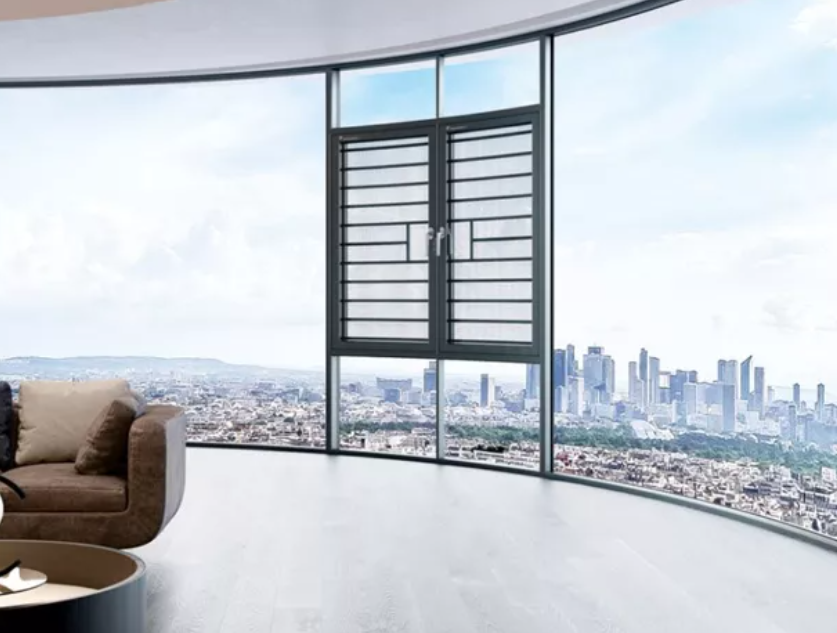
Let us introduce you to something better: the awning window. Rain stays out. Breezes rush in. Sounds perfect, right? This type of window doesn’t just look great—it’s practical, energy-smart, and easy to use. The window style you choose affects your comfort, your energy bills, and your home’s look. In this post, we’ll cover the basics of awning windows, their pros and cons, and how to pick the best one for your home.
What Is an Awning Window?
An awning window is a window that opens outward from the bottom. It’s hinged at the top, so when you open it, the glass tilts out like a mini roof. That’s where the name comes from—it acts like a cloth awning, blocking rain while letting in air. This window works in all kinds of homes—new or old, simple or fancy. You’ll often see it above sinks, over showers, or high on walls where privacy matters.
How Do Awning Windows Work?
Awning windows are super simple to use. Most have a crank handle—you just turn it, and the window swings open from the bottom. Some designs use a push-out system, especially in modern homes. Either way, you can open them wide or just a crack. Rain won’t get in because the glass leans out like a roof. So you can leave it open, even during a storm.
There’s usually a screen on the inside to keep bugs out. A rubber seal around the edges helps block heat, cold, and noise. The whole thing is built to last, and many models have multi-point locks for extra security.
Key Features of an Awning Window
Top hinge: Swings open from the bottom, like an awning.
Outward opening: Saves space inside your room.
Interior screen: Easy to clean and protects from insects.
Tight seal: Keeps rooms cozy in all seasons.
Horizontal shape: Sleek and great for wide wall spaces.
Simple mechanism: Crank or push-out handle for smooth use.
Types of Awning Windows
Type | Panels | Best For |
Single-sash | 1 | Bathrooms, closets, pantries |
Multi-panel | 2 or more | Kitchens, wide living room walls |
Awning + Casement | Combo | Stylish living areas with airflow |
Custom shape | Varies | Arches, triangles, and unique designs |
Where Are Awning Windows Used?
Awning windows fit in almost any room. Let’s see how:
Bathrooms: Put them high for privacy, and still let fresh air in.
Kitchens: Great above counters where space is tight.
Basements: High wall placement adds light and ventilation.
Bedrooms: Install them above beds for airflow without losing privacy.
Living rooms: Pair them under picture windows for both views and ventilation.
Laundry rooms or stairwells: Brighten dark corners with high-placed awning windows.
Benefits of Awning Windows
Awning windows bring a lot to the table. Here’s what homeowners love most:
Let in air, block rain – Stay cool even during a storm.
Save on energy bills – The tight seal keeps indoor temps steady.
Secure – Locks and seals make them hard to pry open.
Clean design – Their shape works with any architectural style.
Flexible location – High or low, they fit where others won’t.
Easy to use – The crank is smooth and doesn’t need much effort.
Safe ventilation – Many stay locked in a slightly open position.
Great for small or awkward spots – Like over toilets or sinks.
Disadvantages of Awning Windows
Like all windows, awning types have a few drawbacks to think about:
Not an escape route – The opening is too small for emergencies.
Can block outdoor space – Sash sticks out, so avoid them near decks or paths.
Hard to clean outside – Upper-floor windows need a ladder or pro cleaner.
No space for A/C – You can’t use a window air conditioner with them.
Limited view when open – The glass can block part of your sightline.
Awning Windows vs. Other Window Types
Awning vs. Casement Windows
Awning: Opens from the bottom, hinged at the top.
Casement: Opens from the side, like a door.
Use awning windows in wide spaces.
Use casement windows in narrow wall spots.
Awning vs. Sliding Windows
Sliding windows: Open side to side.
Easier to clean, but less energy-efficient.
Awning windows seal tighter and handle rain better.
Awning vs. Double-Hung Windows
Double-hung: Both sashes slide up or down.
Easier to clean inside but not as airtight.
Awning windows offer better insulation and weather protection.
Best Materials for Awning Windows
The material you choose affects looks, durability, and cost. Here’s a simple comparison:
Material | Look | Upkeep | Cost | Best For |
Vinyl | Clean, simple | Very low | $ | Most homes |
Wood | Warm, classic | High | $$ | Traditional homes |
Aluminum | Sleek, modern | Medium | $$ | Contemporary style |
Fiberglass | Strong, long-lasting | Low | $$$ | Energy-efficient homes |
Design and Configuration Options
You can personalize awning windows in many ways:
Color: Choose white, black, tan, or even custom shades.
Grids: Colonial, prairie, or no grid for a cleaner look.
Glass: Frosted for privacy, tinted for glare, or clear for brightness.
Layouts: Try open-closed-open (XOX) patterns for modern flair.
Mix & match: Combine with fixed or specialty windows for style.
Energy Efficiency and Insulation
Awning windows are smart for saving energy. Here's why:
Multi-point locks press the sash tight to block air leaks.
Low-E glass reflects heat in summer and traps warmth in winter.
Double or triple panes cut noise and boost insulation.
Many models are ENERGY STAR® certified, saving you money and helping the planet.
Cleaning and Maintenance Tips
Taking care of awning windows is easy:
Dust weekly using a soft cloth or vacuum brush.
Wipe glass with a vinegar-water mix for a streak-free shine.
Pop out screens for cleaning, then rinse and dry.
Oil the crank every few months to keep it moving smoothly.
Conclusion
Awning windows are smart, stylish, and efficient. They bring in fresh air while keeping rain and noise out. They’re great for kitchens, bathrooms, bedrooms—and even basements.
But they’re not the best for emergency exits or air conditioning. Before you buy, think about your space, needs, and budget. Talk to a local installer for expert advice.
If you want comfort, privacy, and sleek design—awning windows are a great choice for your home.

FAQs
Q: What is an awning window?
A: An awning window is hinged at the top and opens outward from the bottom, forming a canopy-like shape that blocks rain while letting in fresh air.
Q: Where can I install awning windows in my home?
A: Awning windows work well in bathrooms, kitchens, basements, and bedrooms—anywhere you want ventilation and privacy.
Q: Are awning windows energy efficient?
A: Yes, they feature tight seals, multi-point locks, and Low-E glass options, making them excellent for reducing drafts and saving energy.
Q: Can I use a window air conditioner with an awning window?
A: No, awning windows are not compatible with window A/C units due to their outward-opening design.
Q: Are awning windows easy to clean?
A: The inside is easy to clean, but for upper-floor windows, you may need a ladder or a professional to clean the exterior.
















